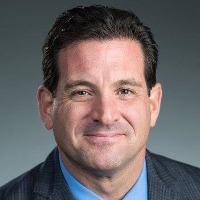You open your mailbox one day to find a certified letter waiting for you. As you sign for it and start reading, you realize it’s a summons to the courthouse. A client has filed a lawsuit against you, and now you’re going to have to defend yourself in court. You never thought this would happen to you, and because of that, you didn’t take any steps to mitigate the financial risk a lawsuit could entail. Now, not just your business assets but your personal wealth is at stake.
Without proper planning, you could face significant financial losses from creditors and judgments; fortunately, we have an excellent legal framework for asset protection in this country; it’s just up to you to make the most of it. The first step in safeguarding your assets is being aware of the tools at your disposal.
Your Business Structure Matters
If your CPA practice is a sole proprietorship, there’s essentially no differentiation between your business assets and your personal assets; you’re 100% exposed. Creditors can just as easily go after your personal home or car as they can the physical assets you utilize at work, such as computers and printers. Separating what is the business’s and what is yours can be achieved by incorporating or establishing an LLC.
Benefits of Corporations
A corporation offers significant protection by creating a legal separation between your personal assets and your business liabilities. As a shareholder in a corporation, your personal assets are generally shielded from business debts and legal actions, meaning creditors can typically only pursue the corporation’s assets. However, corporations do come with additional requirements, such as maintaining corporate formalities like holding regular board meetings, keeping detailed records, and properly documenting business decisions. Failure to abide by these formalities risks ‘piercing the corporate veil’ that protects your personal assets.
Benefits of LLCs
An LLC (Limited Liability Company) also provides personal liability protection but with more flexibility and fewer formal requirements than a corporation. LLCs are often favored by small business owners, including CPAs, for their simpler management structure and the ability to benefit from pass-through taxation, which avoids the double taxation issue faced by C corporations. However, just like with a corporation, it’s important to maintain the separation between your personal finances and the LLC’s finances to preserve liability protection.
Store Your Savings in Retirement Accounts
Your general savings in a bank account are completely exposed and vulnerable to seizure by the courts or from creditors, as are your assets within a brokerage account. In contrast, retirement accounts often have special protections, particularly in bankruptcy proceedings. Between April 1, 2022, and March 31, 2025, the cap on protection for traditional IRAs and Roth IRAs in bankruptcy is $1,512,350. This amount represents the total sum protected, so even if you have multiple accounts, the combined amount safe in bankruptcy remains $1,512,350.
Rollovers from qualified plans, such as 401(k), 403(b), and certain 457 plans, generally enjoy unlimited protection in bankruptcy cases. However, this protection may not extend to other types of legal judgments, such as those from personal injury lawsuits – it’s best to consult your own state’s laws as they vary.
Employer-Sponsered Retirement Plans
If you have assets in employer-sponsored retirement plans, including SEP IRAs, SIMPLE IRAs, 403(b) plans, and 457 plans, many of these accounts enjoy strong protections against bankruptcy claims. ERISA-governed plans, like most 401(k) plans, generally offer unlimited protection in bankruptcy. However, not all 403(b) and 457 plans are governed by ERISA; plans offered by governmental and certain non-profit entities typically are not. ERISA-governed plans normally offer stronger federal protections than non-ERISA plans, which may rely more heavily on state laws for creditor protection, especially in non-bankruptcy situations.
However, these retirement assets are not entirely invulnerable. The IRS can seize funds from these accounts to satisfy unpaid taxes, and retirement assets can be allocated through a Qualified Domestic Relations Order (QDRO) for child support or alimony. As a business owner, if your retirement plan covers only you, the level of protection might differ, particularly if the plan is not governed by ERISA, making it subject to state laws for creditor protection outside of bankruptcy.
Utilize Asset Protection Trusts
If you don’t own something, someone can’t take it away from you, right? That’s the essence of asset protection trusts, which come in two forms: domestic and foreign. By transferring ownership of your assets—including business assets—into an asset protection trust, you can create a legal barrier between those assets and potential creditors. Asset Protection Trusts offer the distinctive advantage of allowing you to name yourself as the beneficiary of the assets within the trust. The trustee can distribute payouts to you based on the terms set during the trust’s creation. However, the trustee has the discretion to withhold payouts if deemed necessary, an important feature for maintaining the trust’s protective purpose.
Additionally, the courts may view any close personal relationship between the trustee and the grantor with suspicion and could consider the trust fraudulent if they determine that the grantor effectively maintains control over the assets. This could lead to the trust being dissolved and your assets vulnerable. Lookback windows also play a role in determining the trust’s legality. If you transfer assets to a trust and then file bankruptcy six months later, the transfer could be declared fraudulent.
Domestic Asset Protection Trusts (DAPTs): DAPTs are created under the laws of specific states that have enacted APT statutes, such as Alaska, Delaware, and Tennessee. These trusts allow you to protect both personal and business assets from creditors while still retaining some control and access as a beneficiary. The key is that once the assets are in the trust, they are legally owned by the trust, not by you personally, which can shield them from creditors’ claims.
Foreign Asset Protection Trusts (FAPTs): FAPTs operate similarly to DAPTs but are established in jurisdictions outside the United States, such as the Cayman Islands or the Isle of Man. These jurisdictions often have laws that do not recognize foreign court judgments, making it extremely difficult for creditors to access the assets held in these trusts. For a creditor to make a claim against the assets in an FAPT, they would have to pursue the case in the foreign jurisdiction, a process that is typically costly, complex, and time-consuming. Deterrence is the primary objective of FAPTs, and they excel at it.
Annuities and Life Insurance as Asset Protection Tools
Annuities and life insurance policies can also provide a layer of protection against creditors, depending on state laws. Some states protect the cash surrender values and the proceeds from these policies, while others only protect the beneficiary’s interest. Additionally, the death benefits from life insurance policies are often exempt from creditors as they bypass probate and go directly to the beneficiary.
In Conclusion
While strategies like incorporating your business and utilizing retirement accounts and trusts can offer significant protection, no method is foolproof. Laws vary by state and change over time, so what works in one situation may not be suitable in another. While these strategies cover some of the most common asset protection methods, there are numerous other options that could be suitable depending on your specific situation. In fact, we could probably write a book on the strategies you can implement. But, we hope that it is enough information for you to ponder your own situation and initiate a conversation with a professional.
Speaking of a professional, we’d be happy to incorporate your risk mitigation strategy into your overall financial plan. Just click the button below to initiate your own conversation!











